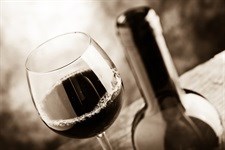
According to Wikipedia, "Slow Food is an international movement founded by Carlo Petrini in 1986. Promoted as an alternative to fast food, it strives to preserve traditional and regional cuisine and encourages farming of plants, seeds and livestock characteristic of the local ecosystem. It was the first established part of the broader Slow Movement. The movement has since expanded globally to over 100,000 members in 150 countries. Its goals of sustainable foods and promotion of local small businesses are paralleled by a political agenda directed against globalization of agricultural products."
I suggest it is time for a similar movement amongst wine drinkers in South Africa (the process has apparently already started in Italy); for wine consumers to speak up about what we expect from wine writers. Now is the time for the slow-tasted wine review.
To start I need some basic information:
Additional information
For more specialist publications:
Coming up in part 2 - wine appreciation.